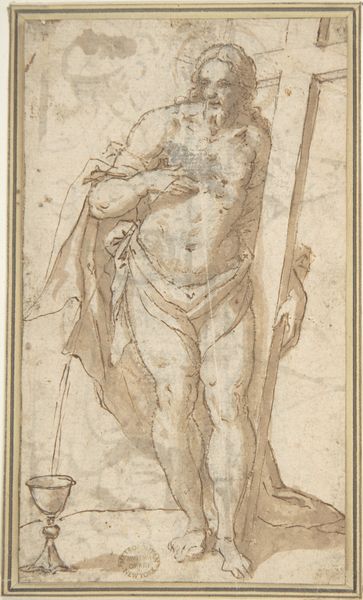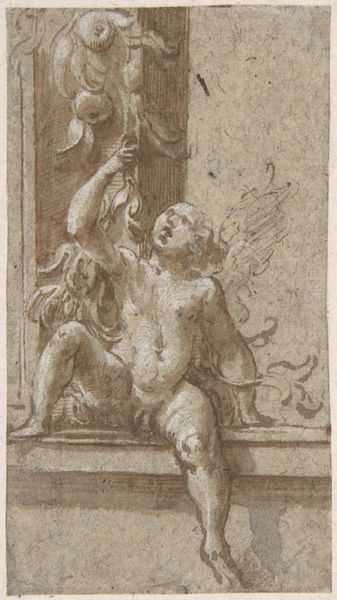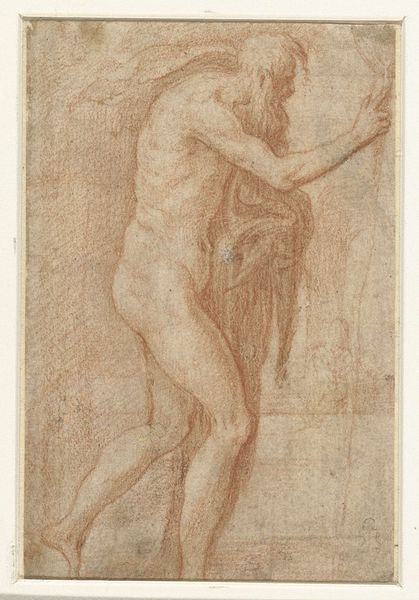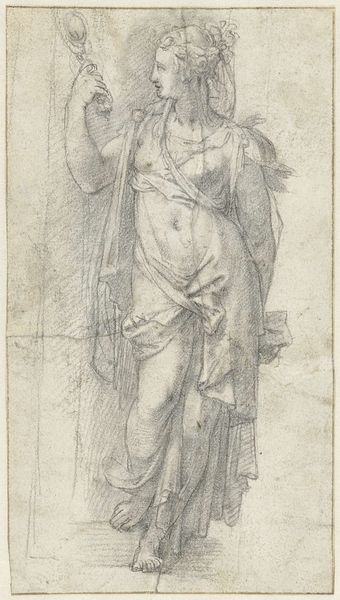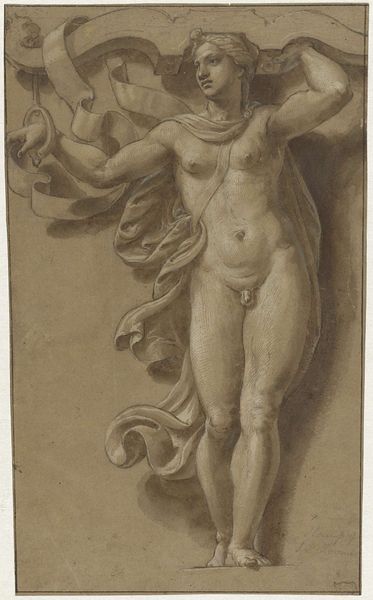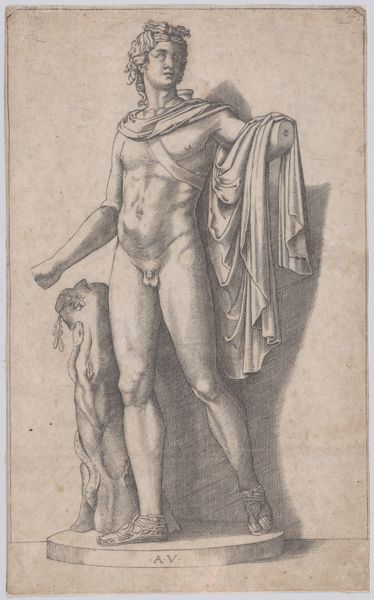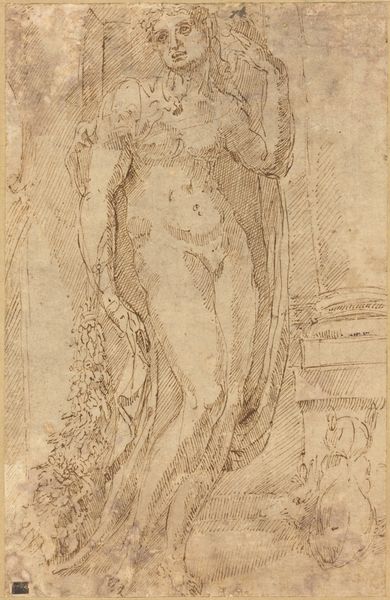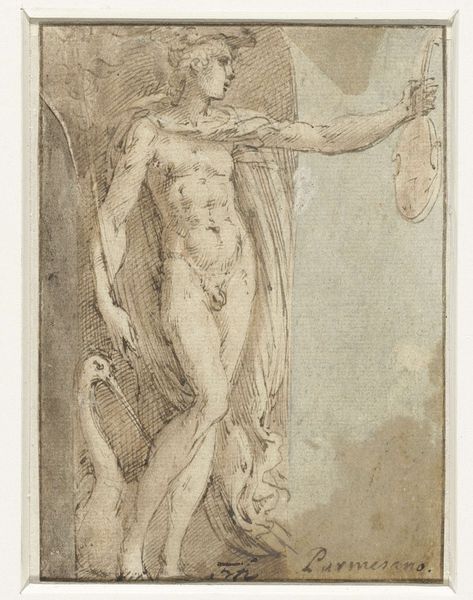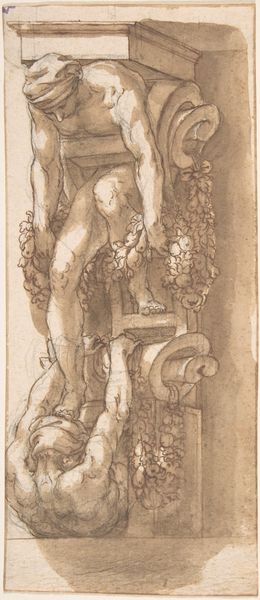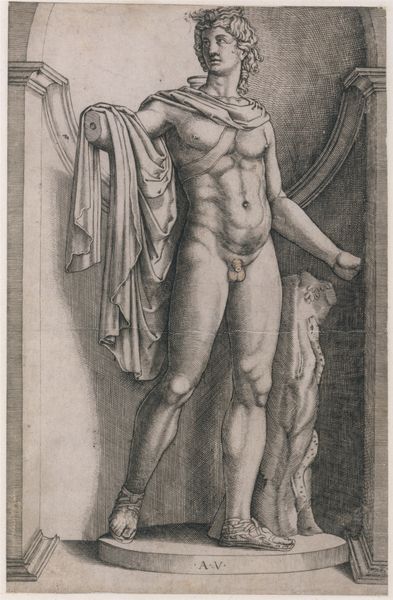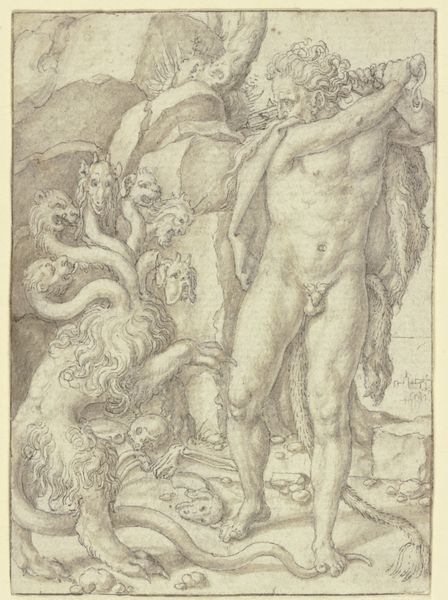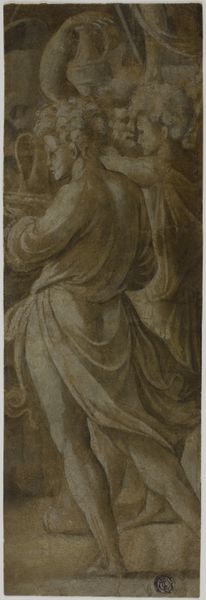
drawing, print, charcoal
#
drawing
# print
#
sculpture
#
charcoal drawing
#
figuration
#
11_renaissance
#
charcoal
#
history-painting
#
charcoal
Dimensions: 9-9/16 x 5-11/16 in. (24.3 x 14.4 cm)
Copyright: Public Domain
Editor: This intriguing drawing is called "Apollo," made anonymously sometime between 1600 and 1700. The medium is charcoal, a drawing or perhaps a print. The figure is beautiful but feels unfinished, like a study. What is your interpretation of this Apollo? Curator: It strikes me as a preparatory drawing, typical of Renaissance practices focused on the ideal. Consider the revival of classical subjects during this time and how these depictions reinforce specific ideas about power and beauty that were circulating in European courts and academies. What purpose might this figure have served beyond just a study? Editor: Perhaps as a model for a sculpture, or part of a larger composition? Were artists always striving for realism at this time? Curator: Realism as we understand it today was not necessarily the primary aim. There was often an effort to ennoble and project ideal virtues and physical attributes onto these figures, particularly within aristocratic and politically powerful circles who controlled art patronage. The display of power through artistic representations was crucial. Editor: That's fascinating, the role of the patron in dictating the narrative and appearance. It is thought-provoking that even the unfinished quality reflects a controlled image. Curator: Precisely. The control of the image was part of controlling the message. Think about who had access to images and what stories were being told. It affects how we continue to perceive history. Editor: That’s helped me appreciate how studying a simple sketch can lead to bigger questions about the social function of art! Thanks.
Comments
No comments
Be the first to comment and join the conversation on the ultimate creative platform.
